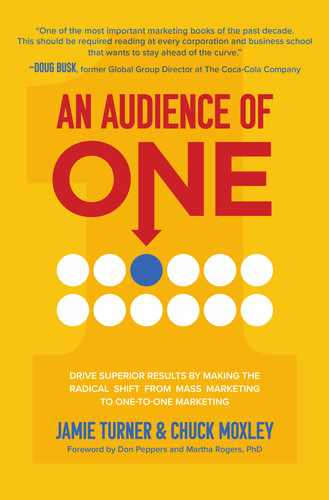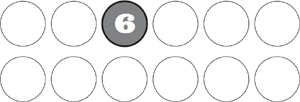
THE SALES FUNNEL ISN’T DEAD. IT JUST NEEDS A KICK IN THE BUTT.
The marketing funnel can give marketers funnel vision. In focusing on the transaction over the relationship, marketers can lose sight of the actual consumer the funnel was designed to reach.
––TOM FISHBURNE, FOUNDER AND CEO, MARKETOONIST1
OK, the first few chapters of the book covered a lot of ground. Part 1 discussed what 1:1 marketing is and how it differs from mass marketing. Then Part 2 discussed how your consumer is changing and that you need to keep up with those changes. And it also discussed what a 1:1 campaign actually looks like.
This chapter discusses the sales funnel and how it is evolving. If you’ve been in marketing long enough, you’re already familiar with the sales funnel framework. It was invented in 1898 by Elias St. Elmo Lewis, an advertising executive who was trying to develop an explanation that described how prospects engaged with brands and ultimately became customers. There were four stages to Lewis’s model—awareness, interest, desire, and action. Using Lewis’s framework, marketers could discuss how prospects become aware of a product/service and then gain interest in the product/service. At a certain point, that interest turned into desire, which ultimately resulted in action, where they converted from prospect into customer.
In 1961, Robert Lavidge and Gary Steiner wrote an article titled “A Model for Predictive Measurements of Advertising Effectiveness” for the Journal of Marketing.2 They added a few new wrinkles to Lewis’s model and called it the hierarchy of effects theory. Instead of just awareness, interest, desire, and action, Lavidge and Steiner went a bit deeper and created a model that included awareness, knowledge, liking, preference, conviction, and purchase. As a result, the sales funnel looked like the illustration in Figure 6.1.
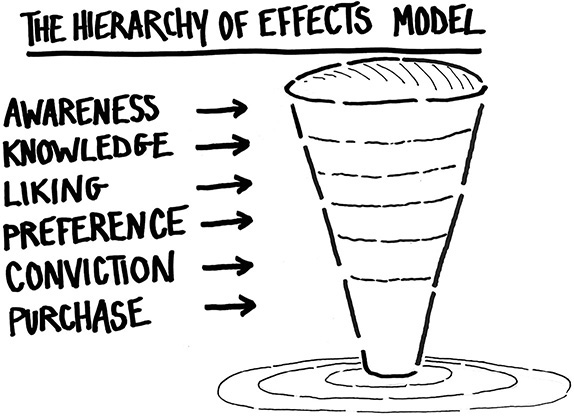
Figure 6.1 The hierarchy of effects model was created by Robert Lavidge and Gary Steiner in 1961.
The six behaviors tied to the hierarchy of effects theory (i.e., awareness, knowledge, liking, preference, conviction, purchase) can be sorted into three categories—think, feel, and do. The awareness and knowledge stages (i.e., the think stages) happen when a prospect gets information about a product or service and then processes that information cognitively. The liking and preference stages (i.e., the feel stages) happen when a prospect starts to feel emotions about the product or service. And the conviction and purchase stages (i.e., the do stages) focus on action, which is when the prospect buys the product or service and becomes a customer.
One-to-one marketing is about understanding how people move from being a prospect to being a customer, in a targeted and personalized manner. The foundation for that is research—doing your homework to understand what drives a purchase and how to optimize that process—and robust inference, e.g., via holdout experimentation.
—JULIAN RUNGE, PHD, VISITING RESEARCHER3
Lewis’s model and the hierarchy of effects model are both fine and dandy—they do a good job explaining the theory behind the consumer journey. The problem is that these models imply that there is a linear journey for your prospect. In other words, they assume all prospects start at the top of the funnel and then gradually work their way down each stage until they convert at the bottom. That was fine if you were a mass marketer working in the twentieth century. But that process, outlined in Scenario 1 of Figure 6.2, isn’t always accurate. As you can see in Scenario 2 of Figure 6.2, sometimes people start in the middle of the funnel and then work their way back to the top before moving back down through the funnel.
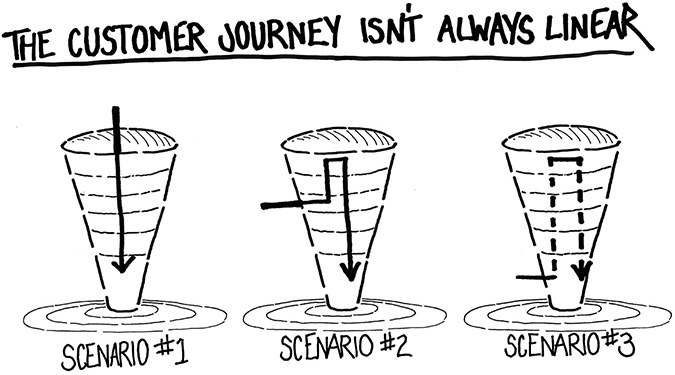
Figure 6.2 Customers take a variety of paths to making a purchase decision.
At other times, prospects might follow the path in Scenario 3 of Figure 6.2—they might start at the bottom of the funnel with an impulse purchase without having gone through any of the other stages. After making the purchase and consuming the product, they might jump back up to the top of the funnel where they go through the awareness and knowledge stages, then skip down to the preference and conviction stages before making a repeat purchase.
The truth is that it’s almost impossible to map how consumers move through the decision-making and response process. A “journey” implies that someone goes from top to bottom in some logical, orderly fashion. But as we all know, consumers may start in one place, go to another, come back to the first, and then skip all the steps in between on their way to a purchase.
In addition, some decisions are made rapidly (within seconds) and others may take months or longer. Given this nonlinear and unpredictable behavior, 1:1 marketers have to rethink not only how they communicate with customers, but also what types of interaction, engagement, and persuasive techniques will make a difference.
RETHINKING THE SALES FUNNEL WITH A 1:1 MINDSET
Mass marketing was all about interrupting a consumer’s life with a message about your product or service. The consumer would be enjoying a TV show, radio program, print magazine, or any other form of mass media. The brand would interrupt that experience to force its message into the consumer’s mind.
There were two primary drivers behind traditional mass marketing—frequency and engagement. If you pushed your message on consumers frequently enough, they would remember your product or service and (hopefully) purchase it. The alternative was to engage consumers with a message that made them laugh or cry. When consumers engage emotionally with an ad, a memory is created. When a memory is created, a consumer is more likely to purchase your product or service.
In some cases, larger brands could achieve high frequency and high engagement. Global brands like Nike, Apple, and BMW leveraged the one-two punch of frequency and engagement in a way that drove significant awareness (and revenue growth) around the globe. But most brands don’t have the marketing muscle of these large, well-established brands. Furthermore, no matter how much marketing muscle you have, if consumers are resistant to commercial interruptions, they won’t respond to the messages anyway.
It’s also worth noting that mass marketing lacked relevance for most of the consumers who saw the messages. One of the strengths of a 1:1 marketing campaign is that they’re more relevant to the person who sees the ad. Here’s an example of the waste that happens with a traditional mass marketing campaign.
Say you’re the marketing director for Ralph Lauren Blue, a fragrance that appeals to a subset of the larger population as a whole. Traditionally, you would run a TV campaign to build brand awareness and drive people to online or brick-and-mortar retailers who sold the product. Your TV campaign would run during prime time on a show that might have a higher than average female viewership. Despite running on a show targeting women, there’s still waste—perhaps 40 percent of the viewers might be men who aren’t necessarily in the market for perfume. Out of the 60 percent remaining, you could argue that half of those wouldn’t have the demographic or psychographic makeup to purchase a Ralph Lauren fragrance. And out of the 30 percent of those remaining, perhaps two-thirds had plenty of perfume already and didn’t need any more.
That leaves you with a TV campaign that’s reaching 10 percent of the intended audience. In other words, to reach that 10 percent, you have to waste 90 percent of your budget, as illustrated in Figure 6.3. Can you imagine walking into your CFO with any other business expense and trying to justify that kind of waste? “Hi Barbara, can you approve this expense? We’re going to buy light bulbs for our office building, but 90 percent of the light bulbs we buy won’t work. Can you just sign right here so I can make the purchase?” It’s mind-boggling. And it’s why the solution that 1:1 marketing offers is not only necessary, it’s imperative.

Figure 6.3 A TV spot for Ralph Lauren Blue perfume on a TV show with 60 percent female viewership and 40 percent male viewership resulted in 90 percent inefficiency.
WHAT 1:1 MARKETING IS AND WHAT IT ISN’T
1:1 marketing isn’t a tactic or a series of tactics. Instead, it’s a strategic approach that brands use to create a more meaningful and personalized campaign for the consumer. You can think of 1:1 marketing as a mindset. It’s an approach you can use to build a better and more meaningful relationship with your prospects and customers. To execute a 1:1 marketing campaign properly, you’ll need three things—the mindset, the techniques, and the technologies.
If traditional marketing was all about using mass marketing to create a linear sales funnel, then 1:1 marketing is about creating meaningful, relevant campaigns that are as personalized as possible. Instead of interrupting a passive experience with generic mass marketing campaigns, 1:1 allows a brand to weave itself into the fabric of the prospect’s life in a more relevant and meaningful way.
One of the best examples of a brand that successfully used 1:1 marketing is Airbnb, which has avoided running large-scale, traditional mass marketing campaigns throughout most of its existence. What kick-started Airbnb’s growth was a bit of sophisticated programming and innovative problem solving. The team found a way to cross-publish Airbnb listings on Craigslist so that whenever someone searched the Craigslist classified site for a vacation rental, listings for properties on Airbnb popped up. They didn’t run generic mass marketing campaigns. Instead, they figured out a way to create hypertargeted, relevant, and meaningful ads that popped up right when an individual was searching for, say, a short-term rental unit located in downtown Denver. The result was that Airbnb was seamlessly woven into the fabric of the consumer’s life, not in a loud, traditional, mass marketing approach, but through a quiet, more intimate, 1:1 approach.4
Fisher-Price used 1:1 marketing to reverse the decline in sales they were experiencing in France.5 They dug into a pile of data and derived insights about that segment’s demographics, media affinities, purchase intentions, and purchase behaviors. They also created microsegments of their ideal customers so they could create and deploy remarketing campaigns along with a personalized call-to-action for each e-commerce site. To make the campaign even more efficient, they uploaded a list of their existing customers to their online display ad network and excluded those existing customers from the campaign. In other words, since the goal for the campaign was to attract new prospects and convert them into customers, they excluded existing customers from the campaign as a way to improve efficiencies.
What were the results? Fisher-Price experienced 95 percent aided awareness immediately following the campaign (number one in their category). Their cost-per-view was 25 percent lower than anticipated and their cost-per-click was 66 percent lower than anticipated. Most important, sales increased 10 percent during the first two weeks of the campaign.
The key for Fisher-Price was that they shifted their mindset from a traditional mass marketing campaign, which might entail buying a generic Thursday evening prime-time advertising slot on network TV, to a more targeted, nuanced, 1:1 campaign that used cutting-edge technology to hypertarget ads to precisely the right prospects.
Unilever in Thailand used a similar 1:1 campaign to increase sales of their fast-moving consumer goods (FMCG) 5 percent to 10 percent over the course of the campaign.6 They acquired consumer data via Line, which is Thailand’s biggest chat platform. As prospects engaged with the platform, automated chatbots asked a series of questions specific to that prospect’s previous online behavior.
As an example, a single male who has a propensity to shop online and who was asking Line for a quick, easy dinner recipe would also likely be a candidate for products that require a minimum of fuss and are simple to use. Unilever used customer data to derive insights about the prospects who were using the Line platform. Then based on those insights, they delivered customized, personalized campaigns for specific products that might be particularly appealing to the prospect. In this example of the single male who shopped online and was asking about an easy dinner recipe, Unilever delivered an ad with a special offer for a simple-to-use laundry detergent that would appeal to that user’s personality traits. The result was a campaign that drove a 5 percent to 10 percent increase in sales during the course of the campaign.
Not bad for a day’s work, right?
McDonald’s ran a 1:1 marketing campaign in Indonesia that generated sales results that were 18 percent better than projected.7 The campaign used TV and the McDonald’s app to give the appearance that the app and the prospect’s TV were connected to one another. During a commercial break featuring McDonald’s, the prospect was asked to open the McDonald’s app and select which fruit they wanted in their next fruit smoothie. The TV commercials and the app both created a countdown effect at exactly the same time. Once the countdown reached zero on the TV commercial and the app, the “winning” fruit was revealed. If the fruit on the TV matched the selection the prospect made on their app, then they were sent a coupon to receive a free fruit smoothie using that fruit flavor.
The 1:1 Framework
The 1:1 framework presented earlier is used at various points throughout the book to help you gain a better understanding of the complexity and precision of various 1:1 techniques (Figure 6.4). For each of the campaigns in this chapter—McDonald’s, Fisher-Price, Airbnb, Unilever, and Ralph Lauren—you’ll see where the campaigns fall on the matrix. Take a spin through the graphic, and think through why each of the case studies is plotted the way it is. Over time, you’ll be able to make judgments on the campaigns you’re considering based on the complexity and precision required to execute them.
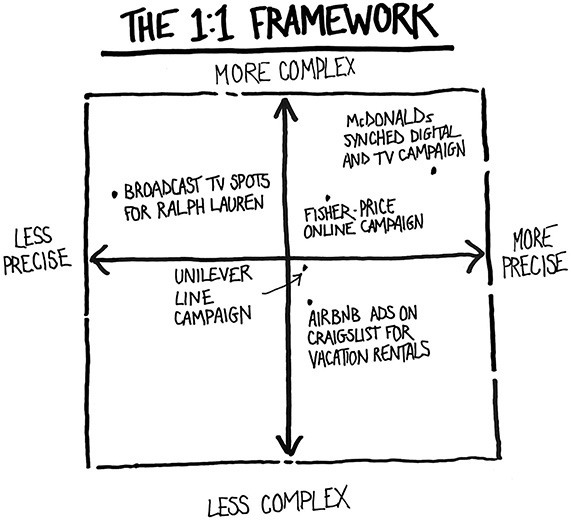
Figure 6.4 The 1:1 framework is designed to help you understand the complexity versus precision equation for different kinds of campaigns.
1:1 ISN’T ABOUT A TECHNOLOGY, IT’S ABOUT A MINDSET
The key for each of these campaigns wasn’t the use of a complex, new technology. These campaigns used technology that is readily available to any marketer working at just about any corporation. Instead, the key was that these marketers each had a 1:1 mindset and decided to use 1:1 techniques to create a meaningful, emotionally engaging campaign that drove superior results. In other words, they treated each prospect and customer as a person who has a name, has unique needs, and wants to engage with brands on their own terms. This is in contrast to mass marketers who simply use demographics to interrupt a consumer’s life with an ad that may or may not be relevant to them.
Frans Mahieu, the former global marketing director for Kimberly-Clark (makers of Huggies, Kotex, Kleenex, and other brands) summed up 1:1 marketing very well when he said, “The problem many marketers face is that they think the traditional sales funnel accurately represents the customer journey. The truth is that the customer journey doesn’t just start at the top of a sales funnel and move step-by-step down to the bottom. The customer journey bounces around a lot and is a non-linear journey. As a result, marketers need to use techniques and technologies to connect with people in a hyper-targeted, 1:1 capacity. By doing so, they connect with prospects and customers in a more relevant, personalized, engaging manner, which is a far cry from the mass marketing used previously.”8
For many executives, understanding the nuances and application of 1:1 marketing takes time. One way to wrap your mind around the concept is to observe and analyze other brands to see if they’re implementing a 1:1 marketing strategy. Another way is to study Table 6.1, which provides a snapshot of what 1:1 marketing is and what it isn’t.
Table 6.1 Marketing in a Nutshell
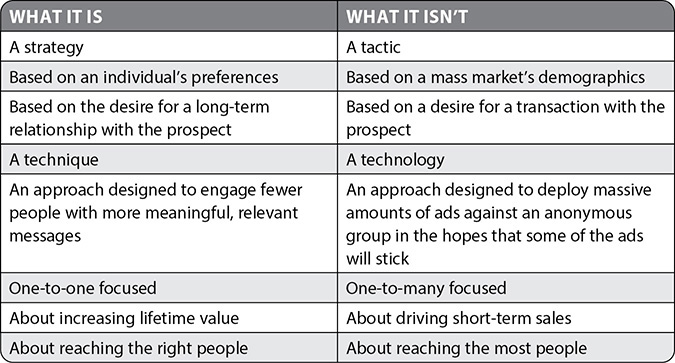
When thinking about your customer’s journey, remember that the sales funnel isn’t dead, it just needs to be viewed as a framework rather than a specific set of occurrences. In other words, understand that the sales funnel is useful as a way to describe where your customer is in the purchase process, but it’s not a linear process. Your prospect can be anywhere in the sales funnel at any given time.
With that in mind, understand that traditional mass marketing was about targeting audiences based on the hope that your prospect would be interacting with a particular medium at a particular time. 1:1 marketing is about targeting individuals by meeting them where they are with campaigns that are relevant to their specific needs and desires. 1:1 isn’t about a specific technology (although later chapters go deeper into some advanced techniques that will take 1:1 to an entirely different level). Instead, 1:1 is about changing the way you look at the sales funnel, the customer journey, and the media you can use to connect with those prospects.
